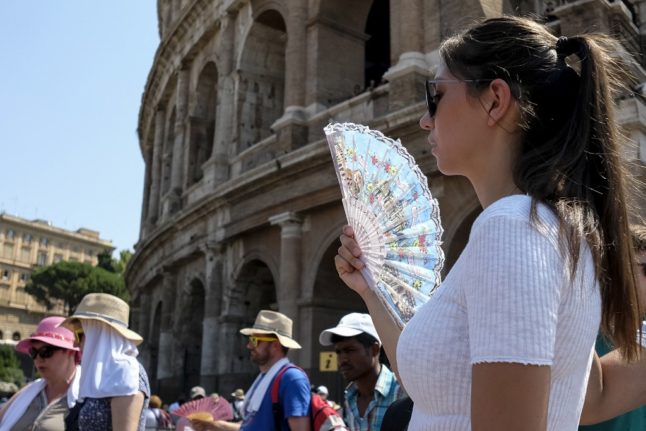Temperatures across Italy have been steadily rising once again this week. From Thursday, weather forecasters warn temperatures will be unusually high in many parts of the country – and will stay that way until the end of next week.
The incoming heatwave is the fifth Italy has experienced so far this year, and it’s forecast to be the most intense yet.
READ ALSO: ‘Four to five light meals a day’: Italy’s official advice for surviving the heat
Friday and Saturday will be the two hottest days, according to weather news site Il Meteo, with maximum temperatures over 35 degrees from north to south and peaks of 36-38°C by Friday.
Milan, Bologna and Florence were expected to be the hottest Italian cities on Friday, with Rome forecast to be a more manageable 31°C.
The highest temperatures of all are expected in localised areas of the northern Po Valley, where drought has already decimated crops and prompted local authorities to place restrictions on water usage.
Temperatures will continue to climb towards 40°C in parts of the north and centre-south of the country over the weekend and into next week, with the mercury predicted to rise highest in inland parts of central Italy and Sardinia.
EXPLAINED: How could Italy’s drought state of emergency affect you?
The heatwave is expected to peak by Wednesday, July 20th, but temperatures are set to remain throughout next week with accompanying high humidity creating sticky and unpleasant conditions.
Forecasters said on Thursday that temperatures are likely to exceed 40 degrees by Wednesday in inland areas of the north and the centre-south of the country.
Italy has already experienced a series of unusually powerful and lengthy heatwaves in 2022, resulting in three times more wildfires than usual and exacerbating the worst drought in 70 years after months of low rainfall and an unusually dry winter.
The government has released official advice on how to stay safe during the extreme weather, including by avoiding going outdoors between 11am and 6pm; wearing a light-coloured hat, sunglasses and sunscreen when outdoors; taking periodic showers to reduce body temperature; and drinking at least two litres of water a day.



 Please whitelist us to continue reading.
Please whitelist us to continue reading.
Member comments